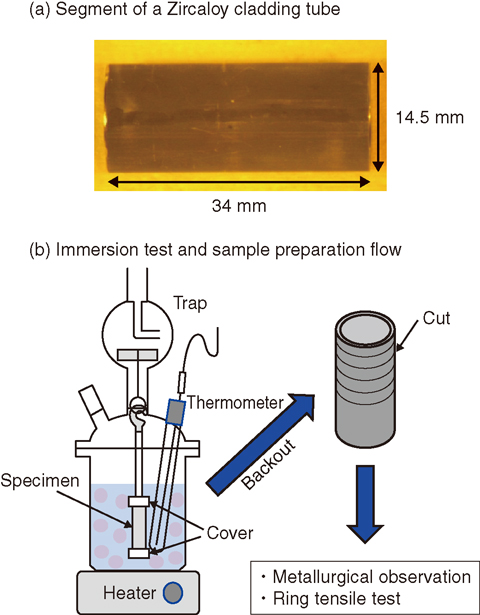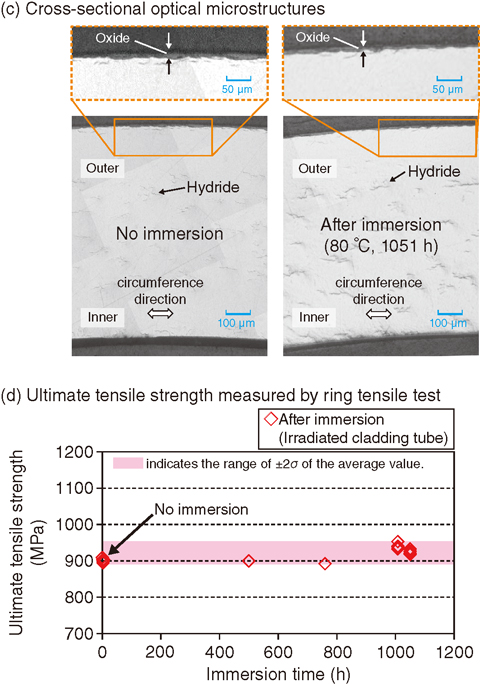
Fig.1-25 Immersion test procedure and sample preparation

Fig.1-26 Optical microstructures and tensile properties of the cladding tubes without immersion and after seawater immersion
In the accident at the TEPCO’s Fukushima Daiichi NPS (1F), seawater was temporarily injected into the spent fuel pools (SFPs). Then, new and spent fuel assemblies in the SFPs were temporary immersed in seawater at high temperatures (70-90 ℃ ). There are plans to transport the fuel assemblies in the SFPs to a common pool set up on the 1F site, where they will be stored for a long time. Therefore, during storage, the integrity of the fuel assemblies must be maintained, and fuel failure should not occur. However, for those assemblies that experienced seawater immersion, surface corrosion because of seawater constituents such as chloride ions and the resultant degradation of mechanical properties are of concern. It is necessary to assess the integrity of the fuel assemblies, especially the cladding tubes that act as the most important boundaries for containing radioactive fission products inside the fuel rods. Therefore, using the irradiated Zircaloy cladding tubes that were obtained from a spent fuel assembly of the advanced thermal reactor “FUGEN” (which is similar to the type of BWRs used at the 1F plant), a seawater immersion test was conducted under the assumed environment of the SFPs in the early stage of the 1F accident. After that, a ring tensile test was evaluated for the cladding tube specimens (Fig.1-25).
The typical cross-sectional optical microstructures of the cladding tubes without immersion and after seawater immersion are shown in Fig.1-26(c). Focusing on the outer surfaces, there was no change between the non-immersed and immersed tube specimens. Neither pitting corrosion nor uniform corrosion had been caused. No obvious change in the oxide formation induced during reactor operation would not influence the mechanical properties in the circumferential direction. In addition, there were no visible changes in the hydride distribution (such as reorientation) in the matrix of the cladding tube. This meant that the hydride distribution in the radial direction, which would affect the mechanical properties in the circumference direction, had not progressed during the time of the immersion test. The ultimate tensile strength measured by a ring tensile test is shown in Fig.1-26(d). This indicates that no significant degradation in the ultimate tensile strength in the circumferential direction was confirmed in this immersion condition and the ultimate tensile strength was independent of the immersion time.
Therefore, it was considered that the influence of seawater immersion on the corrosion behavior and mechanical properties of irradiated Zircaloy-2 cladding tubes was negligible under this immersion condition. As future work, mechanical property evaluations after various immersion conditions, as well as evaluations of other parts of the fuel assembly or the real cladding tubes of Units 1-4, will be conducted.